In light of the dramatic achievement of SpaceX last week in being the first private company to successfully launch a payload into low-Earth orbit and rendezvous and dock with the International Space Station, let’s return to the challenges that lie ahead of us in the 21st century if we are to make outer space a more familiar place for more and more of humanity. The problem today is that our technology will not cut it if we want to make space faring “normal” in the 21st century. We have to go faster and taking our baggage into space with us has to cost less . Why? Because:
- faster means less exposure to cosmic radiation for crews on long space flights
- faster means less provisioning of food, water, oxygen and other consumables
- faster means less fuel requirements to provide the necessary acceleration, course corrections and deceleration involved in interplanetary expeditions
- faster means less risk for missions overall when they are shorter in duration
Today our rockets use kerosene, hydrogen or solid combustible fuels combined with oxidizers to get off the Earth and into space. Given an unlimited amount of fuel on board these rockets can provide continuous acceleration but unlimited is impossible. So we always try to lighten the load when flying to space to keep the size of the rocket within reason. Our biggest rockets, Proton, Energia, Saturn, Titan, and Ariane-5 are monsters in size, weighing millions of kilograms. To achieve Earth orbit these rockets have had to carry enough fuel and oxidizer on board to reach speeds of 28,157 kilometers (17,500 miles) per hour. To escape Earth’s gravity the rockets have had to go at least 10,000 kilometers (6,200 miles) per hour faster. And to escape the gravitational pull of the Sun, our rockets have needed to attain speeds of 59,000 kilometers (approximately 36,500 miles) per hour. The way we have accomplished missions to-date has involved launching multi-stage rockets with the first stage containing the most fuel getting us out of the lower Earth atmosphere, a second stage getting us to Earth orbit and a third giving us the means to achieve lunar, interplanetary or solar trajectories. When we have had to go further we have used other planetary bodies to give our spacecraft a gravity assist. Venus and Jupiter have often played a part in accelerating spacecraft to achieve velocities that exceed 100,000 kilometers (62,000 miles) per hour or more.
To economize on the massive amounts of fuel we have needed we have had to keep our payloads very small. When we have sent humans into space they have gone up in modules as small as a shower stall with barely enough room for one let alone many travellers. We have had to shrink the electronics and economize on consumables making space faring a more than risky enterprise. It is downright dangerous. When we add distances beyond low-Earth orbit we compound the risk for any human crew aboard a spacecraft. If our destination is the Moon, approximately 380,000 kilometers (238,000 miles) our travel time is measured in a few days. We have successfully done this in the Apollo Program. But a destination like Mars, closest at 57 million kilometers (36 million miles), it would take our conventional rockets months to get there and get back and that means human space flight becomes problematic.
That’s why we need to look at alternative technologies for powering spacecraft while in space. And to help get more baggage up there to ensure our human spacefarers have enough food, water, oxygen and consumables on board we have to develop a substitute for the rocket technologies we currently use at launch. That means driving down the cost per kilogram of materials we send into space.
So let’s take a look at what is currently available, and what may be able to see on the horizon in the 21st century.
Current Alternatives to Getting Spacecraft into Low Earth Orbit
Airborne Launches
We launch our human payloads today on ground-based rockets. What if we launched from in the air? That’s the idea behind SpaceShipOne (seen below under the belly of its mother ship), the reusable suborbital ship, developed by Scaled Composites, that won the Ansari X Prize in 2004.
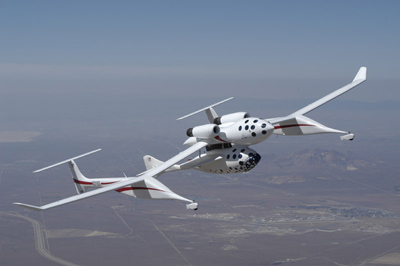
A larger version, SpaceShipTwo, will begin commercial suborbital flights within the next two years. But SpaceShipTwo is aimed at suborbital space tourism and not at launching large payloads into low-Earth orbit.
The developers of SpaceShipOne and Two are working with anther commercial operator, Stratolaunch Systems, with its plan to build a carrier aircraft that can be mated to rocket systems for launching payloads and humans into low-Earth orbit from the stratosphere. Stratolaunch plans include the disassembly of two Boeing-747-400 aircraft and then the combining of the two to create a stable airborne launch platform with an orbital mission range of over 2,000 kilometers (1,300 miles) .
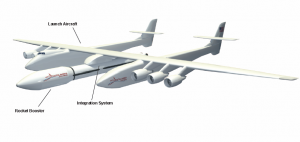
Talk about floating an idea, airships as space launch platforms offer an alternative method of getting humans and payloads into low-Earth orbit. Airships can achieve higher release altitudes than jets ascending to elevations of 40 kilometers (25 miles). JP Aerospace, a California company, hopes to create a permanently manned station in the upper atmosphere that can be visited by cargo and passenger airships, a way station on the edge of space.
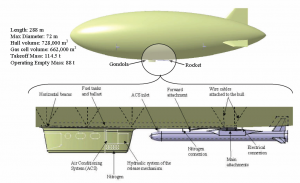
Rail Gun Launches
Today we have Mag-Lev trains. Why not use this technology for launching very large payloads and human crews into low-Earth orbit? The Startram Project hopes to do just that using taking existing Mag-Lev technology and building a Maglifter to reduce the cost of sending materials and humans into low-Earth orbit.
A Maglifter launch vehicle would run on an electromagnetic rail just like those used in Mag-Lev trains. The rail would be built on the side of a mountain or later as a free-standing structure supported by cables just like a suspension bridge.
There are two proposed alternatives for using Mag-Lev. In the first the launch vehicle, carried on a launch sled would reach speeds of 1,000 kilometers (620 miles) per hour before the launch vehicle with payload and rocket on board would ignite to accelerate to escape velocity.
In the second the track would be housed in a tethered vacuum tunnel to minimize heat stress on the launch vehicle and to absorb the shock waves created when the Mag-Lev would accelerate to hypersonic speeds of 9 kilometers (5.6 miles) per second sufficient to attain low-Earth orbit.
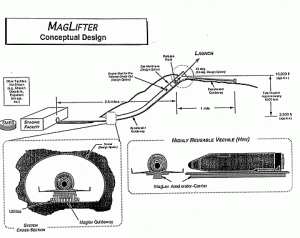
This type of technology has the potential of dramatically reducing payload costs from thousands to a few dollars per kilo making travel to and from outer space much cheaper to support and making it possible for many more humans to get into space.
Space Elevators
In the 19th century a Russian scientist speculated about building a “Celestial Castle” located in geosynchronous orbit around Earth and tethered to an Earth-bound castle. The scientist was Konstantin Tsiolkovsky, the father of Russian space science. The idea was further expounded upon by a Soviet engineer, Yuri Artsutanov, who wrote a non-technical article in 1960 describing a tethered satellite permanently fixed in space that would lift payloads into space at a fraction of the cost of rockets. Arthur C. Clarke, the noted science fiction writer popularized the idea later in one of his stories, “The Fountains of Paradise” in 1978.
Is a space elevator possible or just fantasy?
- We have mastered placing satellites into geosynchronous orbit having ringed the planet with them to meet our telecommunications’ requirements.
- We are experimenting with carbon nanotube technology that displays extraordinary tensile strength capable of meeting the stresses that would be exerted on building and maintaining a tether that stretches from Earth to space.
- We have introduced new composite materials that demonstrate unusual lightness and strength for constructing taller and taller structures here on Earth.
- And we have Mag-Lev technology that can produce high-velocity for moving a payload from an Earth-bound terminal to one located in space.
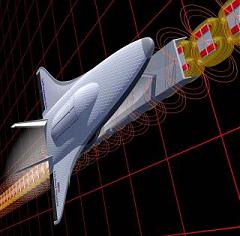
So all of the technologies described above exist for us to consider. We can begin to build these alternatives to chemical rockets. This can be done through private enterprise and through private-public partnerships, for it is the partnership model that has led to the success of SpaceX in this last week, an encouraging new approach to the conquest of space.
Finally, once we drive down the cost of getting materials and humans into space we will then be in a position to build the infrastructure in low-Earth orbit that will lead to the creation of faster transportation technologies to get us to more remote destinations in reasonable amounts of time. We will explore that subject in our next installment on space in the 21st century.
As always your questions, comments and ideas are welcome.








